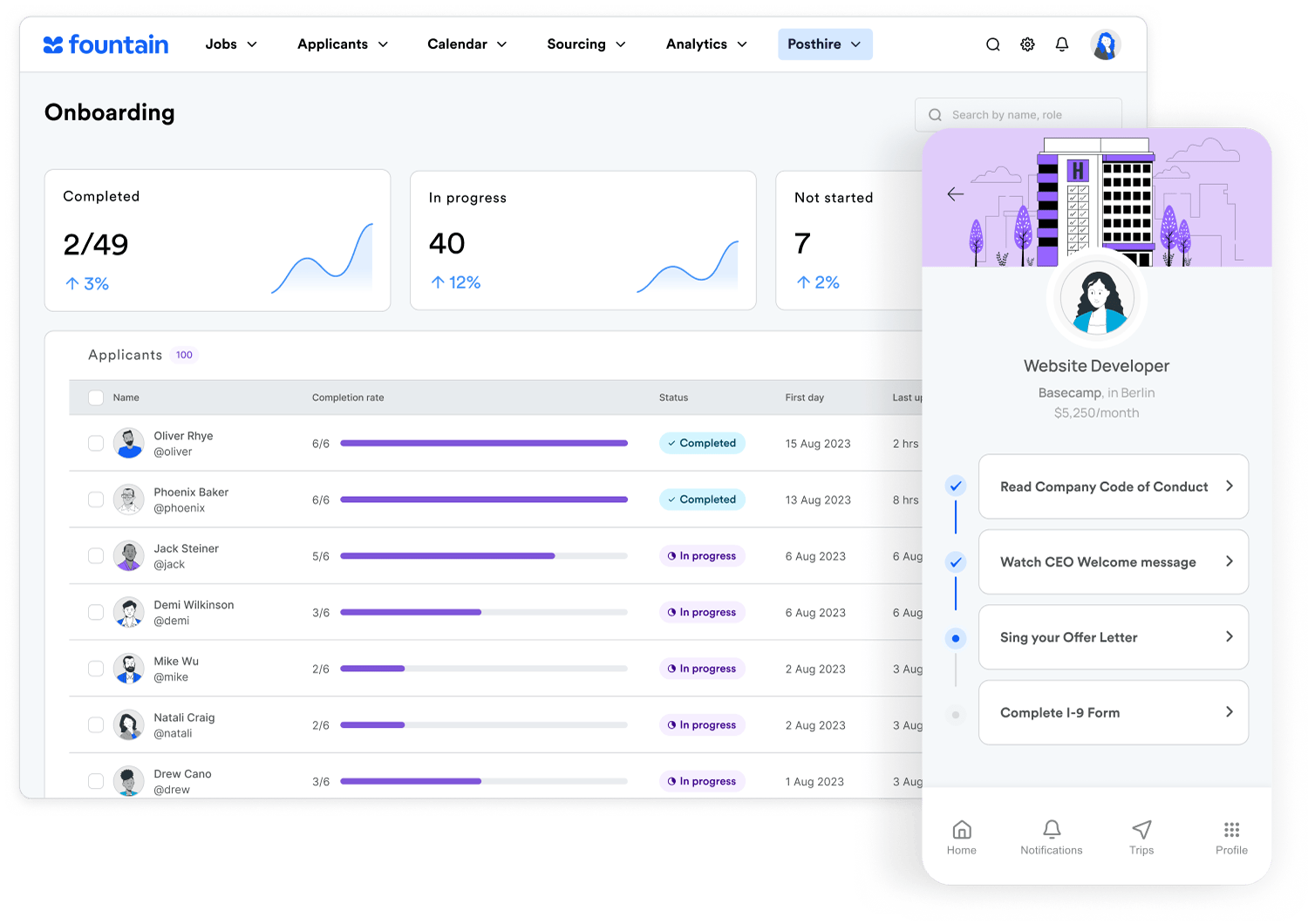Many regard the 1969 Stonewall Rebellion in New York City as the catalyst for the modern LGBTQ+ movement. Pride Month, held in June around the world, is a time for the community to come together in support of LGBTQ+ everywhere. In 1978, artist and gay rights activist Gilbert Baker designed the rainbow flag, which still stands as a symbol of support for the LGBTQ+ community today.
At Fountain, our mission is to “provide opportunities and a world that works for all,” and this is why we celebrate Pride Month. Although the working world is still navigating a hybrid in-person/work-from-home balance, it’s still possible to find ways to promote inclusivity at your workplace for LGBTQ+ employees.
When I think about inclusion and equality, I often think of Brené Brown’s quote: “If we want people to fully show up, to bring their whole selves including their unarmored, whole hearts—so that we can innovate, solve problems, and serve people—we have to be vigilant about creating a culture in which people feel safe, seen, heard, and respected.” Part of being seen, heard, and respected is celebrating people all year long.
Diversity and inclusion initiatives in the workplace have been brought to the forefront during the past year, especially with the landmark decision last June 15 when the U.S. Supreme Court made it illegal to discriminate against workers based on their gender identity or sexual orientation. However, your company may still be falling short in providing a welcoming workplace for LGBTQ+ employees.
Common Fears among HR Managers about Celebrating Pride
- Lack of support for specific hosted events.
In one company I spoke with, the marketing team wanted to go all out for Pride Month and host activities throughout the month of June. One idea was to host an afternoon screening of the film “Milk”, a story about the struggles of gay rights activist Harvey Milk. However, HR was afraid to host the movie for fear that no one would show up and it would hence make LGBTQ+ employees feel uncomfortable if it looked like no one supported them. This fear is not unfounded, but it’s also one that needs to be overcome in order to foster inclusivity in the workplace. By reinforcing support for LGBTQ+ communities and activities, you let all employees know you’re on their side.
- We might offend people who are not in support of LGBTQ+ rights.
A friend of mine, a gay rights activist, designed a Pride t-shirt and when she showed it to HR, she was met with apprehension about giving the shirts to all employees for fear people who were not in support of LGBTQ+ rights would not wear them. HR was mistaken and had misjudged their employees’ support for one another. The shirts went like hotcakes and they actually had to order more! Many employees even wore them to Pride parades in their local towns. If you’re nervous about hosting an activity or designing a t-shirt or a pin, take a pulse survey of your employees to see how they feel. The results may surprise you.
- It seems “exclusive” to have a Slack channel or Google group dedicated to a specific group. What will other groups say?
Inclusivity goes beyond your anti-harassment policy. Providing safe online spaces for people to be able to converse and share information about topics that are important to them, while may seem like a small gesture, can have a big impact and help build stronger relationships among employees. It’s also a great way for employees to learn at their own pace about a topic they may not know much about.
- Executive leadership does not support it.
Getting executive leadership to buy into your LGBTQ+ initiatives may take work, but it’s not impossible. I once worked for a boss who was a devout Catholic and was not keen on doing anything to support LGBTQ+ rights. However, as a representative of HR you are in the perfect position to be that ally. You also have data at your fingertips you can provide to executive leadership to support your LGBTQ+ employees, such as:
- A 2018 study shows that “overall, organizations with one or more LGBTQ+ people in senior leadership positions perform better than other organizations.”
- The latest Gallup poll in 2020 shows that the number of Americans who identify themselves as LGBTQ+ has risen to 5.6%.
- Another recent study by the HRC Foundation shows employee engagement suffers by up to 30% due to unwelcoming environments.
- HRC Foundation also found 26% of LGBTQ+ employees stay in a job because the environment felt inclusive and was accepting.
You can also conduct your own pulse surveys and show anonymized aggregate data from your employees to help support your initiatives.
Happy Pride!

